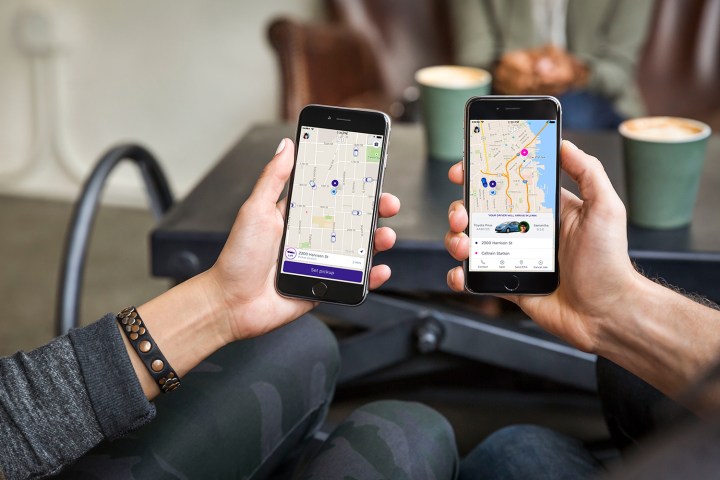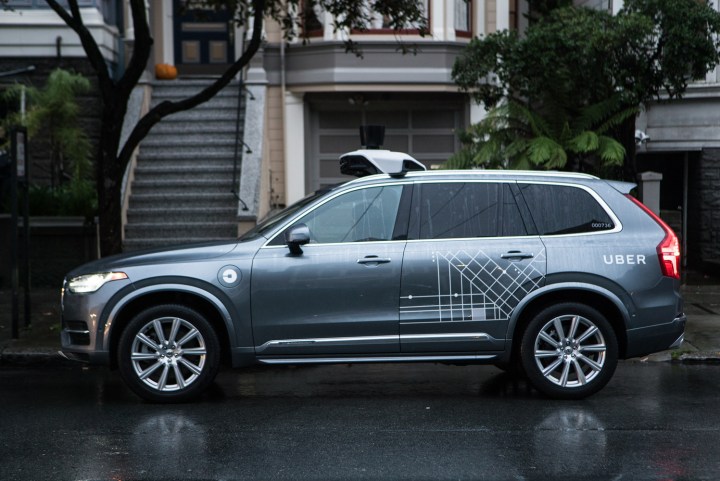
Digital Trends recently attended Semicon West, a semiconductor industry conference, and we focused on how this foundational technology industry is helping disrupt the transportation sector. Presenters and panels offered a variety of plans and visions for the next generation of technological advances in mobility.
One such panel focused on how the industry would likely disrupt transportation in a number of ways. Speakers agreed there are four main drivers of disruption in transportation and mobility today: autonomy, electrification, connectivity, and shared mobility.
“What is going to happen with the industry? Who’s the one to figure this out?”
“Those trends are not possible without each other, and they are accelerating each other,” said Andreas Breiter, associate partner at McKinsey & Company, a large global business consulting firm with offices in more than 120 cities around the world.
Kamal Khouri is vice president and general manager of Advanced Driver Assistance Systems for NXP Semiconductors, the largest semiconductor provider for automotive OEMs in the world.
“It’s an exciting time,” Khouri maintained. “It’s unique to have all these megatrends converge on a single market. We’re in the middle of developing a technology that has a tremendous impact on our planet and on humanity. We’re introducing all these technologies and there’s this race: who’s going to get there first? How will we get seamless connectivity so we can use our time in the vehicle? Especially with the introduction of machine learning and artificial intelligence (AI), it makes the challenge of providing a safe and secure solution a difficult problem.”
Ridesharing needs autonomous cars
Breiter conceded we haven’t answered all the key questions yet. “What is going to happen with the industry? Who’s the one to figure this out? Is it an existing automaker OEM or is it a revolutionary approach from an outsider who will turn the industry upside down? One thing that could be a stepping-stone is a purpose-built vehicle for ridesharing. Why is your shared ride a standard car, and not purpose-built for taxi service?”
Purpose-built taxis have been around as long as the automobile but have fallen out of favor in recent decades. The venerable Checker Marathon and the London Taxi were both designed for ridesharing and survived mostly unchanged for decades.
“As soon as autonomy comes through and is really viable, it will significantly increase the business case for shared mobility,” Breiter predicted. “As soon as you get the driver out of your shared taxi, you have a completely different business case. Then, shared mobility without connectivity is not even thinkable.”
Ridesharing requires connectivity
Most people tend to think about vehicle connectivity in terms of using a phone in the car or getting a restaurant through an app on the dashboard. In fact, it runs much deeper than that, especially when autonomy and shared mobility are in the picture. The shared mobility revolution is dependent on both autonomy and connectivity, because the rider must hail the car, and the car must be there, and it must respond in an accurate and timely manner.
“The big transitions in industry always start with the user interface. …We’re trying to do exactly the same thing in our area.”
“We are creating mobility platforms that provide enjoyable time on the move, so the key message is that we’re mainly focusing on the time the customer spends in the car,” said Dr. Dirk Abendroth, vice president of Autonomous Driving and Powertrain at Byton, a Chinese automaker with offices in California and Munich, Germany.
Abendroth spent 12 years at BMW developing hybrid and electric powertrains, specifically for the i3 and the i8.
“We try to differentiate in this, but not in the traditional competitions like acceleration or just building a car,” he stated. “We’re trying to rethink the program from a customer point of view and thinking about what we should do with the time on board.”

Abendroth believes the user interface will be a big differentiator in future vehicles.
“The big transitions in industry always start with the user interface,” he pointed out. “For example, mobile phones transitioned to smart phones. The first thing to change was the interface, and the apps came later. We’re trying to do exactly the same thing in our area. From the interface, all the other things come one by one.”
That’s not the only lesson Abendroth draws from the mobile revolution.
“The growth in automotive is coming from those high-income dense cities and low-income dense cities outside of Europe and North America.”
“The second part is personalization,” he said. “One of the most useful things about your smart phone is that it’s tailored to you. When you turn it on, it has your exact profile; no one else has exactly the same settings. We’re trying to rethink the entire vehicle. There’s a direct connection between autonomy and connectivity in making use of the time in the car. When autonomy comes, we can have other opportunities.”
Ridesharing shapes urban evolution
McKinsey’s Breiter has been looking into the impact that ridesharing could have on the evolution of cities and mobility around the world. One unexpected finding is that shared transportation will not differentiate along national boundaries as much as it will between cities, suburbs, and rural areas.

“We can no longer look at countries,” Breiter said. “We have to be more granular. We think the driver of growth in mobility is on the city level. If we categorize the cities of the world, we get different archetypes. One dimension is income level and another one is how dense is the city. Are we talking about the very dense core of a city or are we talking about urban sprawl? The growth in automotive is coming from those high-income dense cities and low-income dense cities outside of Europe and North America. Those are the growth engines of the future. We’re focused on how those types of cities will develop.”
Breiter offered details to describe how future shared mobility will help shape the cities in the coming years.
“You’d have public transportation to get you out of the city core, but public transportation will not be sufficient. “
“In a city that’s developed and has a dense core, you could see a scenario of seamless mobility where people switch between different modes of transportation seamlessly. If you go out to the suburbs of those cities, you could have a scenario of private autonomy. If you go to the developing world, you’ll have more focus on shared mobility, and on making the place cleaner.”
How will this affect the currently developed world? How does Breiter imagine the transportation solution for a dense city in Europe or North America developing in the next decades?
“People will switch between modes of transportation. People could switch from public transit to autonomous ride-sharing solutions or even take bicycles. If you go to the outside of those cities, the picture changes. You’d have public transportation to get you out of the city core, but public transportation will not be sufficient. You’ll have private cars and privately-owned shared autonomous cars.”
Ridesharing drives auto sales
At first, ridesharing doesn’t seem like it would change the automobile market. But the phenomenon is shaking up the mobility industry as profoundly as anything, and it could ultimately change the way cars are designed, built, and distributed.

“A lot of people think the mobility sector is in decline but we see a different story,” Breiter told the audience at Semicon. “We believe we’ll still see growth, but slower than it has been in the past. It will be coming from outside of Europe and North America.”
Ridesharing, both with privately-owned vehicles and with fleets owned by the automakers or other corporate entities, is likely to change the nature of automobile use and ownership first.
83% of people who use ridesharing services do so because it’s convenient
“We think ridesharing and e-hailing will have an impact,” Breiter said. “There will be fewer private vehicles, but there will be a counterbalancing effect of new shared vehicles. These shared vehicles will have a shorter lifetime because they’ll be used much more.”
For automakers, the ridesharing revolution offers huge potential. Putting customers into ridesharing cars exposes them to the car’s brand and may create future customers.
“There’s an opportunity to grow the auto market by getting into the ridesharing business,” Breiter insisted. “Building and selling cars is no longer enough. Increased focus on the customer and what’s affordable and convenient for them is required in a changing world.”
Ridesharing is still growing
One thing that’s certain, according to Breiter, is that ridesharing will continue to grow.
“We’ve asked a lot of people in different markets what they thought about shared mobility. 83% of people who use ridesharing services do so because it’s convenient, and 67% of them want to increase the amount of ridesharing they do, so a big part of the market is still unaddressed, which is interesting because the market is already quite large and growing very fast.”
That’s how ridesharing is going to change the world.
Editors' Recommendations
- Autonomous ridesharing isn’t dead: How Waymo is adapting to the post-COVID era
- How Nissan’s ‘invisible-to-visible’ tech could pave the way for autonomous cars




